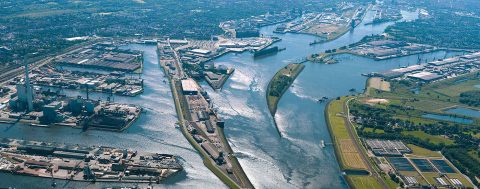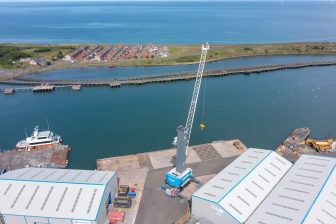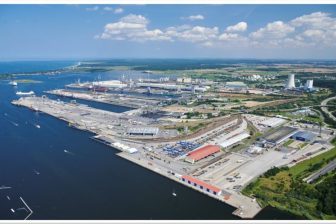
General cargo growth keeps Bremen’s throughput stable
Modest general cargo growth of 1.7% helped Bremen Ports to keep its throughput stable in 2018. The ports in the Federal Land of Bremen handled a total sea freight volume of 74.4 million tons, a year-on-year increase of just 0.3 per cent.
The growth was attributable first and foremost to general cargo throughput, the port acknowledges. While general cargo throughput increased by 1.7%, automobile throughput “remained at the impressively high level of 2.2 million vehicles” but was in fact slightly down in comparison with 2017, when the ports handled about 100,000 vehicles more.
Bremen is one of the largest breakbulk ports in Europe, although the vast majority of its breakbulk volume is made up of automobiles and other ro/ro cargoes, thanks to Germany’s strong automobile industry.
Handling of bulk cargoes was significantly down decreasing by 9.8%, while container traffic remained stable with a total of 5.45 million teu handled by Bremen Ports, in comparison with 5.51 million teu in 2017.
Looking at the individual ports of the region, the ports in Bremen-City saw their total volume decrease from 13.3 to 12.3 million tons in 2018, while Bremerhaven noted an increase 1.9% for a total cargo throughput of 62.1 million tonnes.
Growth path
Martin Günthner, Senator for Economic Affairs, Labour and Ports, views these stable figures for 2018 as fundamentally satisfactory: “The international crises and general uncertainty have also left their mark on global economic development. We are therefore pleased that the stable development at our location last year once again allowed the ports of Bremen to live up to their role as a driver of Bremen’s economy.”
He continued saying that the Senate had made several investment decisions that will set the course for ongoing modernisation of the ports. “In the course of this legislative period, we have invested more than 100 million euros in port infrastructure in Bremen and Bremerhaven. Moreover, the Senate recently earmarked funding for planning new-build projects on the Columbus peninsula and at the entrance to Fischereihafen with a total investment volume of more than 140 million euros.”
Lastly, he added that the latest project for the construction of a new quay at Kaiserhafen III would also create new potential for the shipyard industry in Bremerhaven. “The Senate acknowledges its responsibility for the continuous development of Bremen’s ports,” concluded Senator Günthner.



